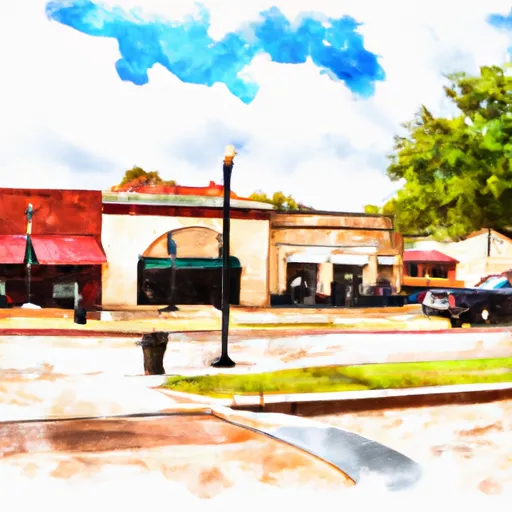-
 Snoflo Premium
Snoflo Premium
Get unlimited access to all our content
With no Ad interruptions! - Start Your Free Trial Login with existing account
Belton
Eden Index
Climate
8.3
•
Recreation
5.9
•
Community
2.8
•
Safeguard
6.1/10

Belton, Texas is a small city located in the central part of the state. The climate is humid subtropical, with hot summers and mild winters. The city is situated on the shores of Lake Belton, which is fed by the Leon River and the Little River. The hydrology constituents of the lake are maintained by the United States Army Corps of Engineers. The lake offers a variety of outdoor recreation opportunities, including fishing, boating, and swimming. Belton also has several parks and nature preserves, including Miller Springs Nature Center and Chisholm Trail Park, which offer hiking trails and camping facilities. Overall, Belton is a great destination for those who enjoy outdoor recreation and natural beauty.
What is the Eden Index?
The Snoflo Eden Index serves as a comprehensive rating system for regions, evaluating their desirability through a holistic assessment of climate health, outdoor recreation opportunities, and natural disaster risk, acknowledging the profound impact of these factors on livability and well-being.
Climate Health Indicator (CHI): 8.3
Belton receives approximately
906mm of rain per year,
with humidity levels near 85%
and air temperatures averaging around
20°C.
Belton has a plant hardyness factor of
8, meaning
plants and agriculture in this region tend to thrive here all year round.
By considering the ideal temperature range, reliable water supplies, clean air, and stable seasonal rain or snowpacks, the Climate Health Indicator (CHI) underscores the significance of a healthy climate as the foundation for quality living.
A healthy climate is paramount for ensuring a high quality of life and livability in a region, fostering both physical well-being and environmental harmony. This can be characterized by ideal temperatures, reliable access to water supplies, clean air, and consistent seasonal rain or snowpacks.
Weather Forecast
Streamflow Conditions
Little
Area Rivers
Little
Snowpack Depths
Little
Reservoir Storage Capacity
Little
Groundwater Levels
Recreational Opportunity Index (ROI): 5.9
The Recreational Opportunity Index (ROI) recognizes the value of outdoor recreational options, such as parks, hiking trails, camping sites, and fishing spots, while acknowledging that climate plays a pivotal role in ensuring the comfort and consistency of these experiences.
Access to outdoor recreational opportunities, encompassing activities such as parks, hiking, camping, and fishing, is crucial for overall well-being, and the climate plays a pivotal role in enabling and enhancing these experiences, ensuring that individuals can engage in nature-based activities comfortably and consistently.
Camping Areas
| Campground | Campsites | Reservations | Toilets | Showers | Elevation |
|---|---|---|---|---|---|
| Lake Wood Rec Area | 25 | 298 ft | |||
| South Shore Park - Lake Bastrop | 38 | 468 ft | |||
| Independence City Park | 21 | 270 ft | |||
| Lockhart State Park | 20 | 499 ft | |||
| Taylor - Granger Lake | None | 543 ft | |||
| North Shore Park - Lake Bastrop | 17 | 463 ft | |||
| Bastrop State Park | 78 | 524 ft | |||
| Wilson Fox - Granger Lake | None | 542 ft | |||
| Berry Springs Park and Preserve | None | 673 ft | |||
| Palmetto State Park | 40 | 336 ft |
Nearby Ski Areas
Catastrophe Safeguard Index (CSI):
The Catastrophe Safeguard Index (CSI) recognizes that natural disaster risk, encompassing floods, fires, hurricanes, and tornadoes, can drastically affect safety and the overall appeal of an area.
The level of natural disaster risk in a region significantly affects safety and the overall livability, with climate change amplifying these risks by potentially increasing the frequency and intensity of events like floods, fires, hurricanes, and tornadoes, thereby posing substantial challenges to community resilience and well-being.
Community Resilience Indicator (CRI): 2.8
The Community Resilience Indicator (CRI) recognizes that education, healthcare, and socioeconomics are crucial to the well-being of a region. The CRI acknowledges the profound impact of these elements on residents' overall quality of life. By evaluating educational resources, healthcare accessibility, and economic inclusivity, the index captures the essential aspects that contribute to a thriving community, fostering resident satisfaction, equity, and social cohesion.

